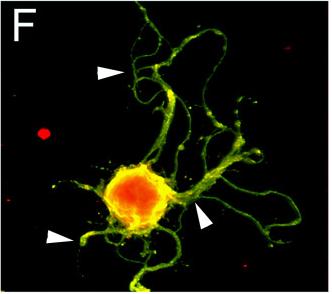The brain, arguably one of the most complex organs in the human body, has more difficulty repairing itself than most other parts of the body. While the nerves outside the brain and spinal cord, which make up the peripheral nervous system, regenerate automatically, the central nervous system, which consists of the brain and spinal cord, has greater difficulty regenerating. The fact that the central nervous system has difficulty repairing neurons is part of the reason why neurodegenerative diseases, like Parkinson’s disease, are so debilitating. However, not all hope is lost.
The fact that the central nervous system has difficulty repairing neurons is part of the reason why neurodegenerative diseases, like Parkinson’s disease, are so debilitating.
Researchers have discovered a signaling molecule that can enhance neuron regeneration after injury: H-RAS. When overexpressed in mouse neurons, H-RAS helps with the regeneration of axons, the part of the neuron responsible for relaying signals across the cell to the axon terminals that then transmit these signals to other cells. However, for axons to regrow, H-RAS needs to be positioned in a specific way so that signaling is focused in the axonal growth cone, which is the machinery responsible for axon extension. Typically, an overexpression of proteins in the MAPK/ERK pathway prevents the optimal positioning of H-RAS. The MAPK/ERK pathway is not only associated with axonal growth but also with the differentiation of neurons and apoptosis (programmed cell death). Fortunately, the remote control of magnetic nanoparticles might be able to overcome this obstacle, allowing for optimal axon regeneration.
Since magnetic fields can safely penetrate deep tissue and control cell behavior, magnetic nanoparticles can be applied in the brain. Scientists explain that applying a magnetic field attracts nanoparticles, thereby generating a “mechanical stimulus” that induces neurite outgrowth and axon extension. A neurite refers to a developing neuron which has not yet developed axons or dendrites, as well as any projection off of a neuron, such as an axon or a dendrite. For a mechanical stimulus to be generated, researchers have used vesicles to get nanoparticles into the cytoplasm of cells. Even with this application of nanoparticles, however, the axons may not be stretched long enough to bridge disconnected brain regions to treat neurodegenerative diseases.
Fortunately, the remote control of magnetic nanoparticles might be able to overcome this obstacle, allowing for optimal axon regeneration.
In order to stretch axons far enough, the scientists suggest putting nanoparticles directly in the cytoplasm rather than in cell vesicles. The researchers started by tagging H-RAS and another protein called SOS1 so that the magnetic nanoparticles could bind to them. Once the nanoparticles were bound to the tagged proteins and a magnetic field was applied, the protein-nanoparticle compounds moved to the tips of the neurite so that the growth cone could elongate and an axon could grow. The researchers tested their methodology in rat tumor cells that have the ability to differentiate and become full-fledged neurons with axons and dendrites. Nerve growth factor was added to ensure cell differentiation and to further stimulate growth. Since no toxic effects were observed when scrape-loading the cells with the magnetic nanoparticles, longer-term magnetic treatments of two days or more will be tested in the future. The main goal of this study was to get the neurons of Parkinson’s disease research models loaded with the magnetic nanoparticles. These models will help researchers perfect this technique so that the neurons can one day be transplanted into people with Parkinson’s diseases as treatment.
Once the nanoparticles were bound to the tagged proteins and a magnetic field was applied, the protein-nanoparticle compounds moved to the tips of the neurite so that the growth cone could elongate and an axon could grow.
Although there is still a long way to go before neurodegenerative diseases become curable, the use of magnetic nanoparticles provides hope that a cure is possible. For a long time, scientists thought it was impossible for neurons of the central nervous system to be regenerated. However, with the force of magnetism, it has been proven that growth can be stimulated in the nervous system.
Image source: Wikimedia Commons






